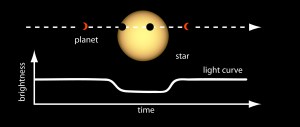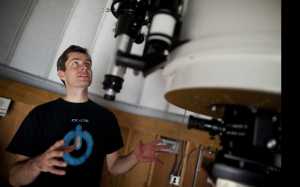Dr. David Charbonneau, a Harvard astronomer known for multiple “firsts” in the field of exoplanet research, has been selected as one of three recipients of the Blavatnik Awards for Young Scientists.
The annual award, which comes with $250,000, is the largest unrestricted cash award given to early-career scientists.
The two other recipients include Dr. Phil Baran from the Scripps Research Institute, who was selected for his research in the field of natural product synthesis, and Dr. Michael Rape from U.C. Berkeley, who was selected for his discoveries related to “ubiquitylation,” which could enable scientists to come up with next-generation therapies in oncology, immunology and inflammation.
“The Awards, given annually by the Blavatnik Family Foundation and administered by the New York Academy of Sciences, honor the nation’s most exceptional young scientists and engineers, celebrating their extraordinary achievements and recognizing their outstanding promise.” The New York Academy of Sciences
Charbonneau was recognized for a long list of firsts, including the first observation of a transiting exoplanet and the first study of an exoplanet’s atmosphere. Those methods have now become the standard in the field and used by astronomers all over the world.

Illustration of an exoplanet transit / Image courtesy of NASA
The three scientists were selected from a pool of nominations submitted by 148 universities and research institutions in the United States. A jury made up of distinguished scientists and engineers narrowed down the nominees to 31 National Finalists and, ultimately, the three winners.

David Charbonneau / Image courtesy of Stephanie Mitchell / Harvard University
Charbonneau’s ability to detect an exoplanet transit was a notable accomplishment because it demonstrated that this was, in fact, possible to do. It also proved that there was a wealth of information that could be derived from a transit, including the exoplanet’s size, mass and ultimately what that exoplanet is made of.
“What that detection did was to show that it was possible; that these planets really did pass in front of their stars. Once people saw how much information we were getting, it was a big shot in the arm of NASA to pick the Kepler mission and fly it.” Dr. David Charbonneau
While the concept of the Kepler Space Telescope had been around for decades, Charbonneau’s work confirmed that detecting and analyzing exoplanet transits would be worthwhile and lead to fruitful results.
Launched in 2009, the Kepler Space Telescope is used to detect planets around other stars by searching for periodic dips in a star’s brightness, indicating the possibility of an exoplanet passing in front of it. In the seven years since it left the Earth, Kepler has confirmed the existence of a couple thousand exoplanets in a single batch of sky in the Milky Way Galaxy.
“It’s impossible to overstate how important Kepler was. It revolutionized the field.” Dr. David Charbonneau
Once the Kepler data started rolling in, Charbonneau worked with his graduate student at the time, Courtney Dressing, on his next big milestone in the field of exoplanet research: determining how common habitable Earth-like planets are in the galaxy.
Through their work, Dressing and Charbonneau estimated that nearly 1 in every 6 cool stars have Earth-like planets in their habitable zone.
“We thought we would have to search vast distances to find an Earth-like planet. Now we realize another Earth is probably in our own backyard, waiting to be spotted.” Dr. Courtney Dressing
One of the next big steps for exoplanet research is to begin analysis of potentially habitable exoplanets’ atmospheres. Based on an exoplanet’s atmospheric composition, scientists could make a prediction as to whether life exists on the surface.
“I think this is the way to go and look for life. If you were an alien astronomer looking at our solar system, you’d be able to see that there was something very different about the Earth’s atmosphere. You’d see that the Earth has a lot of oxygen, it has methane: a lot of things that are only made by biology.” Dr. David Charbonneau
Exoplanet astronomy is a field that is helping scientists understand whether or not Earth and the life that inhabits it are common in the universe. Astronomers like Charbonneau are making strides on the journey to answer the question, “Exactly how rare are we?”
On receiving the award, Charbonneau noted that it was an incredible honor, saying “It’s an acknowledgement that if you take risks you’re going to be rewarded. And that young scientists, despite being young, can often make the most important contributions in science.”
